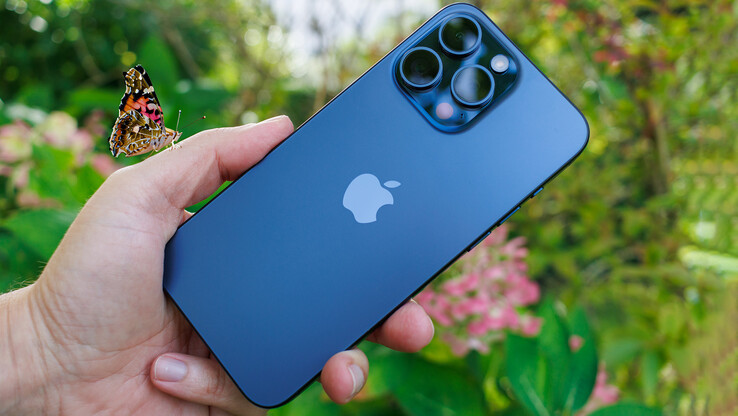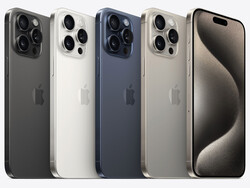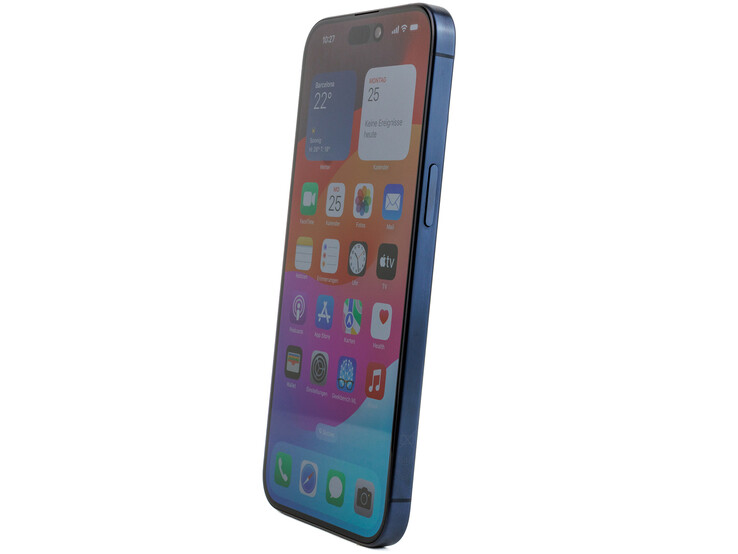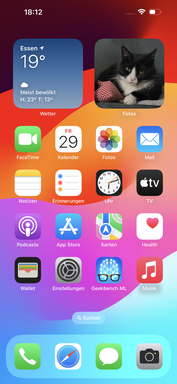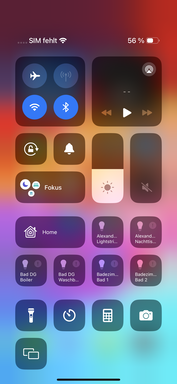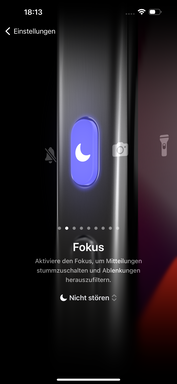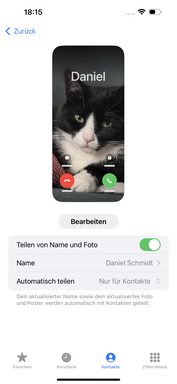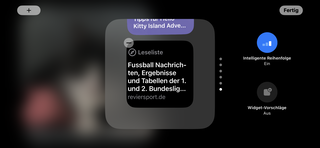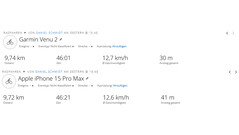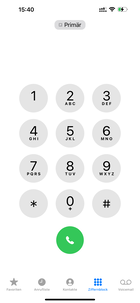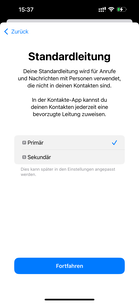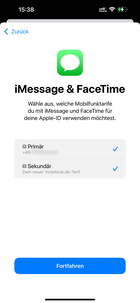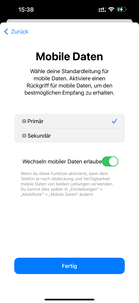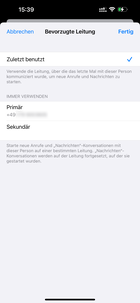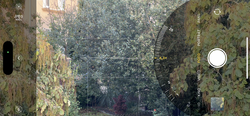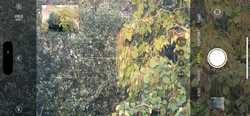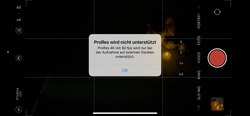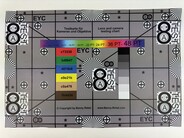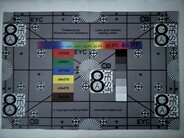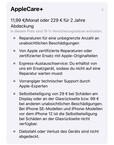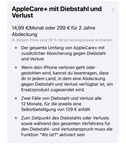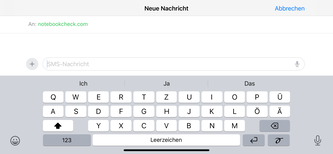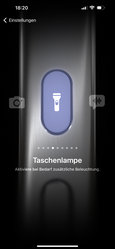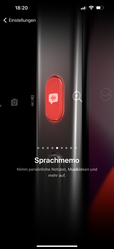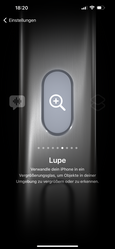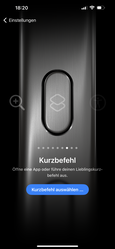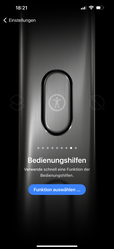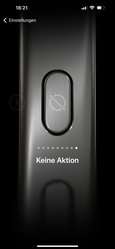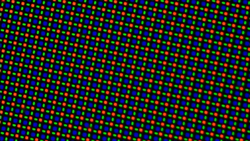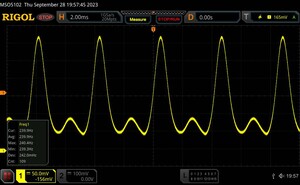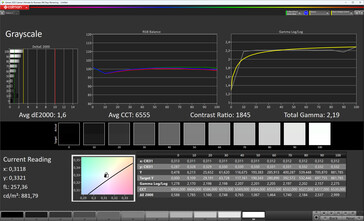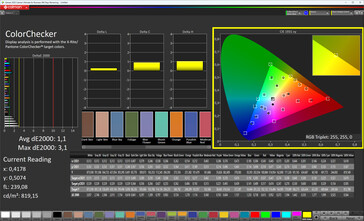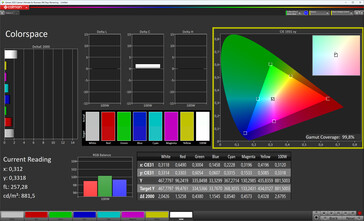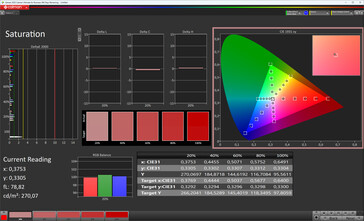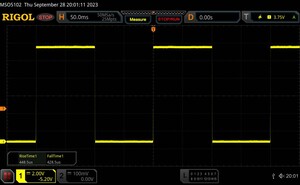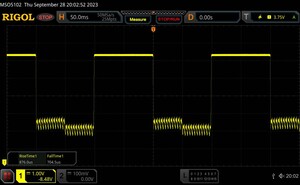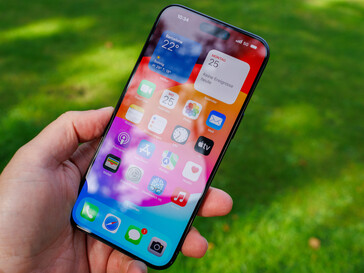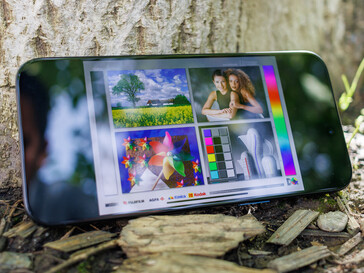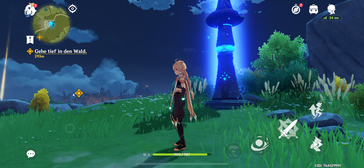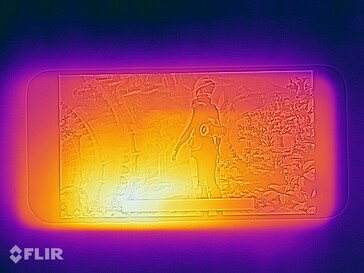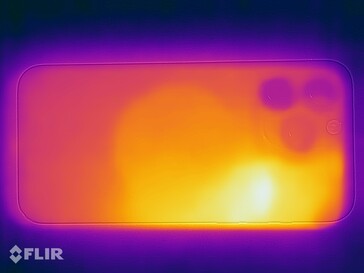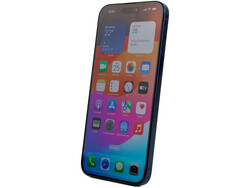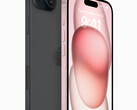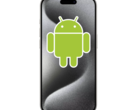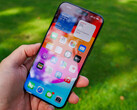Apple iPhone 15 Pro Max review - More camera power and titanium for Apple's biggest smartphone
The Apple iPhone 15 Pro Max has a lot of new things to offer this year: New materials, USB, an action button, a new zoom, UWB 2, 6-GHz WLAN, a new SoC and cheaper prices in some countries. The latter surprised us the most, however, this can be traced back to Europe's more favorable exchange rate, as the prices have remained stable in the US.
In turn, Apple has gotten rid of the 128-GB variant so that the iPhone's entry price remains the same as last year.
Possible competitors compared
Rating | Date | Model | Weight | Drive | Size | Resolution | Price |
|---|---|---|---|---|---|---|---|
| 91.1 % v7 (old) | 12 / 2023 | Apple iPhone 15 Pro Max A17 Pro, A17 Pro GPU | 221 g | 256 GB NVMe | 6.70" | 2796x1290 | |
| 91.1 % v7 (old) | 03 / 2023 | Samsung Galaxy S23 Ultra SD 8 Gen 2 for Galaxy, Adreno 740 | 233 g | 256 GB UFS 4.0 Flash | 6.80" | 3080x1440 | |
| 89.7 % v7 (old) | 06 / 2023 | Xiaomi 13 Ultra SD 8 Gen 2, Adreno 740 | 227 g | 512 GB UFS 4.0 Flash | 6.73" | 3200x1440 | |
| 89.1 % v7 (old) | 11 / 2022 | Google Pixel 7 Pro Tensor G2, Mali-G710 MP7 | 212 g | 128 GB UFS 3.1 Flash | 6.70" | 3120x1440 | |
| 90.1 % v7 (old) | 07 / 2023 | Honor Magic5 Pro SD 8 Gen 2, Adreno 740 | 219 g | 512 GB UFS 4.0 Flash | 6.81" | 2848x1312 | |
| 89.9 % v7 (old) | 06 / 2023 | Sony Xperia 1 V SD 8 Gen 2, Adreno 740 | 187 g | 256 GB UFS 4.0 Flash | 6.50" | 3840x1644 |
Case - The iPhone 15 Pro Max is clad in titanium
The iPhone 15 Pro Max no longer relies on a stainless steel frame - this time, it uses titanium. This is supposed to make a positive change to its weight as well as its stability. The former is now 19 grams less than the 14 Pro Max. In turn, the big Apple smartphone is now a little thicker - albeit only by 0.4 millimetres. Its camera hump sticks out by 4.1 millimetres but due to its rounded base, it doesn't feel too bulky.
The iPhone 15 Pro Max isn't as wide as its predecessor. Even though the difference is only a millimetre, this change can definitely be felt when you compare the two - this is due to the new model's rounded edges. Generally, the smartphone feels nice to hold, even though it is so big. Its build quality is great - there are no visible gaps and any irregularities can only be seen if you take a really close look at the phone. When trying to bend the iPhone, we couldn't elicit any noises from it.
The Apple phone is IP68 certified, meaning it is dust and water resistant. Additionally, it complies with the IEC 60529 standard, which means the phone can be submerged in water up to a depth of six metres for at least 30 minutes with no issues. The iPhone 15 Pro Max can be had in the colors natural, blue, white and black.
Connectivity - The Apple smartphones finally have USB
The iPhone 15 Pro Max is the first generation of Apple smartphones to feature a USB-C connection instead of the usual Lightning port. To be precise, the Max relies on a fast USB 3.2 (Gen 2) connection. We have already taken a closer look at this connection (take a look at the article).
Its USB port allows for nominal data transmission rates of up to 10 Gbit/s and it supports image output in Ultra HD and HDR at 60 FPS. In our copying test with a connected SSD (Samsung 980 Pro), we measured average data rates of 857.28 MB/s, which is on the same level as the ROG Phone 7 (USB 3.2 Gen. 2, 859,15 MB/s). However, it is considerably faster than the Gen 1 connection on the S23 Ultra or the Magic5 Pro. It is exemplary that Apple supports all common file systems (FAT32, exFAT, NTFS (read only), APFS, Mac OS Extended) for external disks. You can also connect Ethernet adapters, microphones and headphones - but no USB mouse or keyboard.
The iPhone's action button is new, which replaces the mute button. In addition, it has a 2nd-gen ultra-wideband chip (UWB), Bluetooth 5.3 and NFC installed.
Software - iOS 17 features Check In and improved stand-by functions
The Apple iPhone 15 Pro Max is delivered with iOS 17 and is expected to be supplied with updates for at least five years - Apple hasn't given any specific info on this.
Apple has supplied iOS 17 with lots of new features: This includes the function Check In via iMessage, in order to help you get home safely. It allows you to send your location, battery and mobile network status to a group of people, as well as add a calculated estimated time of arrival. If you don't get any closer to your target location or if your arrival is delayed, then the other users are notified of this.
Furthermore, your contacts can be further personalized, so you can set which image is shown to others when you call them. Sharing your own contact details (NameDrop) can now be done easily and effortlessly via NFC.
If you set your iPhone on its side while it is charging, you can access a new feature called Standby, which can display further information and live activities. Its accident detection has also been optimized. All updates and further details can be found on Apple's website.
Communication and GNSS - Finally 6-GHz WLAN, but no Wi-Fi 7
On the go, the iPhone 15 Pro Max can connect to 5G-Sub6 at best and the US models also feature mmWave support. Its frequency coverage is extremely large for all mobile network standards, so you shouldn't have any issues connecting to the internet in any part of the world. However, on the off chance you can't connect, you can also make emergency calls via satellite communication. This service is free for two years and Apple has not yet released the prices for after this period.
When it comes to WLAN, Apple finally offers 6-GHz support - but it continues to forgo the use of VHT160 within the 5-GHz network. In our tests using the Asus ROG Rapture GT-AXE11000 as a reference router, we measured stable transfer rates, but they didn't break any records in terms of speed. Furthermore, the phone doesn't yet support the new Wi-Fi 7.
| Networking | |
| Apple iPhone 15 Pro Max | |
| iperf3 receive AXE11000 | |
| iperf3 transmit AXE11000 | |
| iperf3 transmit AXE11000 6GHz | |
| iperf3 receive AXE11000 6GHz | |
| Samsung Galaxy S23 Ultra | |
| iperf3 receive AXE11000 | |
| iperf3 transmit AXE11000 | |
| iperf3 transmit AXE11000 6GHz | |
| iperf3 receive AXE11000 6GHz | |
| Xiaomi 13 Ultra | |
| iperf3 receive AXE11000 | |
| iperf3 transmit AXE11000 | |
| iperf3 transmit AXE11000 6GHz | |
| iperf3 receive AXE11000 6GHz | |
| Google Pixel 7 Pro | |
| iperf3 receive AXE11000 | |
| iperf3 transmit AXE11000 | |
| iperf3 transmit AXE11000 6GHz | |
| iperf3 receive AXE11000 6GHz | |
| Honor Magic5 Pro | |
| iperf3 receive AXE11000 | |
| iperf3 transmit AXE11000 | |
| Sony Xperia 1 V | |
| iperf3 receive AXE11000 | |
| iperf3 transmit AXE11000 | |
| iperf3 transmit AXE11000 6GHz | |
| iperf3 receive AXE11000 6GHz | |
| Apple iPhone 14 Pro Max | |
| iperf3 receive AXE11000 | |
| iperf3 transmit AXE11000 | |
| Average of class Smartphone | |
| iperf3 receive AXE11000 | |
| iperf3 transmit AXE11000 | |
| iperf3 transmit AXE11000 6GHz | |
| iperf3 receive AXE11000 6GHz | |
The iPhone 15 Pro Max features dual-band GNSS support for all global satellite networks, including the Indian NavIC. Its location services work well and even indoors, you are located quickly and accurately.
We compared the Apple phone with our Garmin Venu 2 on a bike trip. In doing so, the iPhone showed a near-identical route to that recorded on the Garmin device - the former only being shown as 20 metres shorter than on the fitness smartwatch. Taking a look at the detailed route recording shows that the smartphone did record our route a little inaccurately at times, but still, this is a good result overall.
Telephone features and call quality - The iPhone has dual-eSIM support
When held up to your ear, the iPhone 15 Pro Max boasts natural voice qualities and its ambient noise suppression also works quite well - as long as it isn't all too loud. In this sense, it is very similar to its predecessor. The iPhone's loudspeaker mode is also good, however, the person you are speaking to on the phone sounds a little more muffled using this mode.
In most countries, the Apple smartphone still supports a physical Nano SIM and you can connect an additional eSIM. However, in the US, the phone doesn't feature a physical SIM card slot at all. Dual-SIM operation also only works with eSIMs. The dual-SIM function can be configured extensively during the phone's setup: You have to set a primary number, which can be customized for each individual contact at a later time. For FaceTime, you have the option to use both numbers. Mobile data can be set to one SIM, however, you can also set the iPhone to switch to the other one automatically if the signal is too weak on your primary SIM. One small issue is its lack of dual-app support. You may be able to mitigate this through some apps which you can buy on the App Store - but they are never free. Other manufacturers have directly integrated this function into their systems, such as Samsung, Honor and Huawei.
Cameras - The iPhone 15 Pro Max takes higher resolution photos
The front still features a 12-MPix lens with autofocus, which is identical to that of last year's model according to the spec sheet. Using this lens, you can take respectable selfies and record video in Ultra HD at up to 60 FPS.
The triple-camera setup on the back continues to be expanded with the help of a LiDAR scanner. The main lens has access to 48 MPix and uses pixel binning (Smart HDR 5). Unlike last year's 12-MPix images, the new iPhone can generate 24-MPix images using this technique. PEG Max and ProRAW Max make use of the phone's full 48 MPix. Moreover, the camera continues to feature optical image stabilization (OIS) with sensor shift. Its additional focal lengths are new: While the standard setting is 24 mm, the phone also offers 28 mm (1.2x) and 35 mm (1.5x). According to Apple, the iPhone's near-lossless 2x zoom (48 mm) is still on board. In practical use, all three lenses are able to deliver good results in daylight.
In low-lighting conditions, you can still manage to achieve some respectable shots. Due to the slightly longer exposure time, our comparison photo is a little blurry. From three seconds onwards, you'll need to make sure you have a steady hand. Even without longer exposure times, you can still take comparatively good photos.
The iPhone's ultra-wide angle mode remains unchanged. Notable are its low-resolution and grainy edges - even during daylight hours. However, this performance is probably just fine for social media. The Magic5 Pro does this better.
The iPhone 15 Pro Max now features a brand-new 5x optical zoom, which is an alone-standing feature of this smartphone within the lineup. Apple even took a new route in terms of the technology used, as it doesn't rely on a periscope lens like its competitors - instead, it features a quad-pixel design which saves a bit of space. This should also allow the sensor to be comparatively large, and Apple also gives the lens an autofocus and - for the first time - an OIS with 3D sensor shift. This lets you take smooth video and even in practical use, Apple did a really great job with this. However, the digital zoom levels are average. It allows up to 25x magnification (600 mm), but the quality decreases considerably above 10x. For the longer focal lengths (from 8x magnification, 192 mm), a digital viewfinder is also displayed, as we already know from the Galaxy S23 Ultra and other Android smartphones.
The Apple iPhone 15 Pro Max can record video in a maximum of Ultra HD and at up to 60 FPS - but it can also use 24, 25, 30 and 50 FPS. You can make use of a maximum of 240 FPS for slow-mo videos (only Full HD). It also supports HDR (Dolby Vision). Its cinema mode, which makes a focus shift with bokeh possible, can be used in a maximum of Ultra HD and at 30 FPS (+ 24, 25 FPS). In video mode, you can utilize stepless zooming from ultra-wide angle right up to 15x zoom.
The real treat, however, is the ability to record video in ProRes HDR 4k at 60 FPS. The storage on our 256-GB model (171.47 GB free) was already full after 41 minutes when using this storage-intensive recording format in Full HD (60 FPS). If we want to record in Ultra HD, then the iPhone 15 Pro Max notifies us to connect an external storage device. A connected 256 GB stick should then be able to hold 34 minutes of video material. It is a bit of a shame that Apple only uses the 16:9 format for video recording. External apps have to be used for 21:9 and the like.
Image comparison
Choose a scene and navigate within the first image. One click changes the position on touchscreens. One click on the zoomed-in image opens the original in a new window. The first image shows the scaled photograph of the test device.
Main cameraMain cameraUltra-wide angle5x zoomLow-light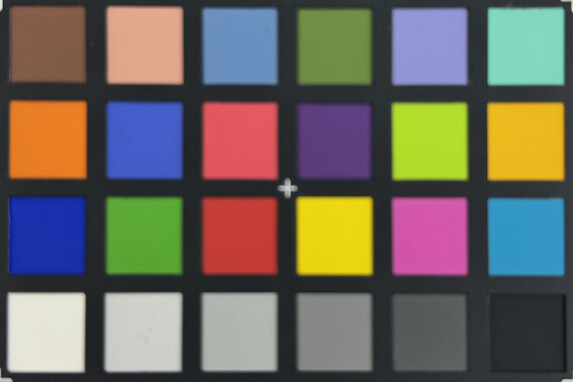
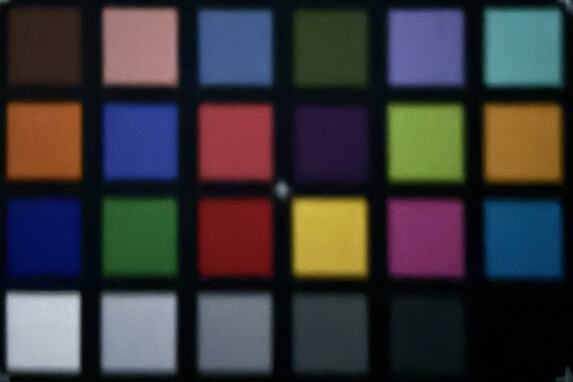
Scope of delivery and warranty - Care+ is slightly cheaper
The iPhone 15 Pro Max doesn't come delivered with much - only a USB cable (USB 2.0), a SIM tool and an Apple sticker are included in the package. Apple does, however, offer a lot of optional accessories in its own shop, including cases and power supplies.
The warranty only runs for 12 months and Apple continues to make its insurance plan, Care+, available for two years for a one-off price of US$199. This includes unlimited repairs in the event of accidental damage, express exchange services and prioritized support. Depending on the type of damage, you may be subject to additional charges. For US$269, you can also get covered in the event of theft or loss - but only up to twice a year. If preferred, you can also pay for this service monthly (US$9.99 or US$13.49) for a minimum of two years, but this can also be extended if you would like to be covered for longer.
Input devices & operation - The iPhone 15 Pro Max now features an action button
The iPhone 15 Pro Max features a capacitive touchscreen which reacts reliably and quickly to inputs in everyday use. Especially compared to the non-Pro models, operation feels a lot smoother - this is due to this iPhone's higher 120-Hz refresh rate.
The 3D facial recognition function FaceID takes care of biometric security, which recognizes users reliably and unlocks the phone quickly. If desired, you can also save an additional profile with glasses or a mask and you can add a setting that only unlocks the iPhone when your eyes are open.
On the left side of the iPhone 15 Pro Max, the old mute button is now replaced by a so-called action button. It can be assigned a whole range of functions - even shortcuts and accessibility functions - but can also be used as a classic mute button if you don't want to make do without one. It's just a shame that the button can't be assigned multiple functions, which could be identified by double tapping the button or holding it for longer, for example.
The phone's Taptic Engine continues to take care of vibrations. This is an electromagnetic linear motor which supplies nice crisp haptic feedback. The iPhone also still supports features such as AssistiveTouch, one-handed operation and tap gestures on the back.
Display - Quick, bright and adaptive
The Apple iPhone 15 Pro Max's 6.7-inch (17.02 cm, 110.2 cm2) OLED screen has a high pixel density and supports Dolby Vision. The display is interrupted by the Dynamic Island which can, again, depict additional information.
The iPhone relies on two ambient light sensors and in the sun, it is supposed to be able to reach up to 2,000 cd/m2. We haven't yet been able to coax this out of the display - presumably, the sensors have to be fully illuminated. As soon as we have managed to successfully do this, we will update the values here. Even so, the iPhone already reaches such a high brightness with the ambient light sensor activated in everyday use - we measured 1,102 cd/m2 in the middle of the screen. If you would prefer to manually adjust the display brightness, then you can expect to reach brightness levels of 880 cd/m2. In HDR mode, the iPhone is full of surprises - instead of the promised 1,600 cd/m2, we actually measured up to 2,367 cd/m2 during our test.
The same as its predecessor, the iPhone 15 Pro Max relies on a Super Retina XDR display with an adaptive refresh rate of 1 - 120 Hz. The OLED screen cannot hide from the flickering that is typical for this type of screen - at minimum brightness levels, we measured a very constant 240 Hz, which shouldn't bother most people despite its relatively low frequency. Above 76 per cent brightness, the frequency rises to a constant 480 Hz. A flicker meter also confirms it to have a frequency of 480 Hz.
| |||||||||||||||||||||||||
Brightness Distribution: 98 %
Center on Battery: 1102 cd/m²
Contrast: ∞:1 (Black: 0 cd/m²)
ΔE ColorChecker Calman: 1.1 | ∀{0.5-29.43 Ø4.78}
ΔE Greyscale Calman: 1.6 | ∀{0.09-98 Ø5}
99.8% sRGB (Calman 2D)
Gamma: 2.19
CCT: 6555 K
| Apple iPhone 15 Pro Max OLED, 2796x1290, 6.7" | Samsung Galaxy S23 Ultra Dynamic AMOLED 2x, 3080x1440, 6.8" | Xiaomi 13 Ultra AMOLED, 3200x1440, 6.7" | Google Pixel 7 Pro OLED, 3120x1440, 6.7" | Honor Magic5 Pro OLED, 2848x1312, 6.8" | Sony Xperia 1 V AMOLED, 3840x1644, 6.5" | Apple iPhone 14 Pro Max Super Retina XDR OLED, 2796x1290, 6.7" | |
|---|---|---|---|---|---|---|---|
| Screen | -28% | 4% | 11% | -24% | -13% | -4% | |
| Brightness middle (cd/m²) | 1102 | 1117 1% | 1357 23% | 1022 -7% | 1291 17% | 934 -15% | 1061 -4% |
| Brightness (cd/m²) | 1102 | 1133 3% | 1340 22% | 1025 -7% | 1289 17% | 948 -14% | 1057 -4% |
| Brightness Distribution (%) | 98 | 97 -1% | 89 -9% | 99 1% | 96 -2% | 96 -2% | 99 1% |
| Black Level * (cd/m²) | |||||||
| Colorchecker dE 2000 * | 1.1 | 2.2 -100% | 1.1 -0% | 0.9 18% | 1.7 -55% | 1.5 -36% | 1.3 -18% |
| Colorchecker dE 2000 max. * | 3.1 | 3.9 -26% | 2.7 13% | 2.1 32% | 4.4 -42% | 4 -29% | 3.1 -0% |
| Greyscale dE 2000 * | 1.6 | 2.3 -44% | 2 -25% | 1.1 31% | 2.9 -81% | 1.3 19% | 1.6 -0% |
| Gamma | 2.19 100% | 2.37 93% | 2.2 100% | 2.22 99% | 2.28 96% | 2.2 100% | 2.19 100% |
| CCT | 6555 99% | 6572 99% | 6366 102% | 6650 98% | 6472 100% | 6384 102% | 6511 100% |
* ... smaller is better
Screen Flickering / PWM (Pulse-Width Modulation)
| Screen flickering / PWM detected | 240 Hz | ||
The display backlight flickers at 240 Hz (worst case, e.g., utilizing PWM) . The frequency of 240 Hz is relatively low, so sensitive users will likely notice flickering and experience eyestrain at the stated brightness setting and below. In comparison: 53 % of all tested devices do not use PWM to dim the display. If PWM was detected, an average of 8108 (minimum: 5 - maximum: 343500) Hz was measured. | |||
Measurement series with fixed zoom level and different brightness settings
We measured the display's color accuracy using a photo spectrometer and the analysis software Calman. When doing so, we deactivated the phone's true-tone function which depicts content as being slightly warmer.
Generally, the iPhone ranges on a very good level - only its pure white deviation might be able to be seen with the naked eye. Its color saturation is also ideal, meaning the panel is well-suited for professional uses.
Display Response Times
| ↔ Response Time Black to White | ||
|---|---|---|
| 0.88 ms ... rise ↗ and fall ↘ combined | ↗ 0.4485 ms rise | |
| ↘ 0.4285 ms fall | ||
| The screen shows very fast response rates in our tests and should be very well suited for fast-paced gaming. In comparison, all tested devices range from 0.1 (minimum) to 240 (maximum) ms. » 2 % of all devices are better. This means that the measured response time is better than the average of all tested devices (20.2 ms). | ||
| ↔ Response Time 50% Grey to 80% Grey | ||
| 1.58 ms ... rise ↗ and fall ↘ combined | ↗ 0.876 ms rise | |
| ↘ 0.7045 ms fall | ||
| The screen shows very fast response rates in our tests and should be very well suited for fast-paced gaming. In comparison, all tested devices range from 0.165 (minimum) to 636 (maximum) ms. » 7 % of all devices are better. This means that the measured response time is better than the average of all tested devices (31.6 ms). | ||
Performance - The iPhone with an Apple A17 Pro
The iPhone 15 Pro Max relies on an in-house SoC, the Apple A17 Pro, with 8 GB RAM. The integrated processor features a total of six cores: Both performance cores can clock at up to 3.78 GHz and the efficiency cores can clock at up to 2.11 GHz.
This adds up to a 10 per cent improvement in pure single-core performance compared to the A16 in the iPhone's predecessor - during the Geekbench multi-core tests, the improvement wasn't as high. Even so, it performs a whopping 50 per cent better compared to the competition with a Snapdragon 8 Gen 2.
| Geekbench ML | |
| 0.5 TensorFlow Lite CPU 0.5 | |
| Apple iPhone 15 Pro Max | |
| Average Apple A17 Pro (n=1) | |
| Apple iPhone 14 Pro Max | |
| Samsung Galaxy S23 Ultra | |
| Honor Magic5 Pro | |
| Google Pixel 7 Pro | |
| 0.5 TensorFlow Lite GPU | |
| Apple iPhone 15 Pro Max | |
| Average Apple A17 Pro (n=1) | |
| Apple iPhone 14 Pro Max | |
| Samsung Galaxy S23 Ultra | |
| Honor Magic5 Pro | |
| Google Pixel 7 Pro | |
| 0.5 TensorFlow Lite NNAPI / Core ML | |
| Apple iPhone 15 Pro Max | |
| Average Apple A17 Pro (n=1) | |
| Apple iPhone 14 Pro Max | |
| Google Pixel 7 Pro | |
| Samsung Galaxy S23 Ultra | |
| Honor Magic5 Pro | |
An integrated Apple A17 Pro GPU takes care of graphics calculations, which features an additional core compared to its predecessor and now supports hardware-based raytracing. This made itself known during our benchmarks and gave the iPhone 15 Pro Max a raytracing performance boost of over 50 per cent. In 3DMark Wild Life Extreme, this advantage was 23 per cent. Unfortunately, the iPhone's GFXBench values stagnated a little and at times, they even fell - in this benchmark, the Android competition did much better.
GFXBench (DX / GLBenchmark) 2.7: T-Rex Onscreen | 1920x1080 T-Rex Offscreen
GFXBench 3.0: on screen Manhattan Onscreen OGL | 1920x1080 1080p Manhattan Offscreen
GFXBench 3.1: on screen Manhattan ES 3.1 Onscreen | 1920x1080 Manhattan ES 3.1 Offscreen
GFXBench: on screen Car Chase Onscreen | 1920x1080 Car Chase Offscreen | on screen Aztec Ruins High Tier Onscreen | 2560x1440 Aztec Ruins High Tier Offscreen | on screen Aztec Ruins Normal Tier Onscreen | 1920x1080 Aztec Ruins Normal Tier Offscreen | 3840x2160 4K Aztec Ruins High Tier Offscreen
| 3DMark / Solar Bay Score | |
| Apple iPhone 15 Pro Max | |
| Honor Magic5 Pro | |
| Apple iPhone 14 Pro Max | |
| 3DMark / Solar Bay Unlimited Score | |
| Apple iPhone 15 Pro Max | |
| Honor Magic5 Pro | |
| Apple iPhone 14 Pro Max | |
| 3DMark / Wild Life Extreme Unlimited | |
| Apple iPhone 15 Pro Max | |
| Samsung Galaxy S23 Ultra | |
| Xiaomi 13 Ultra | |
| Honor Magic5 Pro | |
| Apple iPhone 14 Pro Max | |
| Google Pixel 7 Pro | |
| 3DMark / Wild Life Extreme | |
| Samsung Galaxy S23 Ultra | |
| Apple iPhone 15 Pro Max | |
| Xiaomi 13 Ultra | |
| Honor Magic5 Pro | |
| Apple iPhone 14 Pro Max | |
| Google Pixel 7 Pro | |
| 3DMark / Wild Life Unlimited Score | |
| Apple iPhone 15 Pro Max | |
| Samsung Galaxy S23 Ultra | |
| Xiaomi 13 Ultra | |
| Honor Magic5 Pro | |
| Apple iPhone 14 Pro Max | |
| Google Pixel 7 Pro | |
| 3DMark / Wild Life Score | |
| Google Pixel 7 Pro | |
| Honor Magic5 Pro | |
| GFXBench (DX / GLBenchmark) 2.7 / T-Rex Onscreen | |
| Google Pixel 7 Pro | |
| Samsung Galaxy S23 Ultra | |
| Xiaomi 13 Ultra | |
| Sony Xperia 1 V | |
| Apple iPhone 14 Pro Max | |
| Honor Magic5 Pro | |
| Apple iPhone 15 Pro Max | |
| GFXBench (DX / GLBenchmark) 2.7 / T-Rex Offscreen | |
| Samsung Galaxy S23 Ultra | |
| Xiaomi 13 Ultra | |
| Honor Magic5 Pro | |
| Apple iPhone 14 Pro Max | |
| Apple iPhone 15 Pro Max | |
| Sony Xperia 1 V | |
| Google Pixel 7 Pro | |
| GFXBench 3.0 / Manhattan Onscreen OGL | |
| Xiaomi 13 Ultra | |
| Samsung Galaxy S23 Ultra | |
| Sony Xperia 1 V | |
| Google Pixel 7 Pro | |
| Apple iPhone 14 Pro Max | |
| Honor Magic5 Pro | |
| Apple iPhone 15 Pro Max | |
| GFXBench 3.0 / 1080p Manhattan Offscreen | |
| Xiaomi 13 Ultra | |
| Apple iPhone 14 Pro Max | |
| Apple iPhone 15 Pro Max | |
| Samsung Galaxy S23 Ultra | |
| Honor Magic5 Pro | |
| Google Pixel 7 Pro | |
| Sony Xperia 1 V | |
| GFXBench 3.1 / Manhattan ES 3.1 Onscreen | |
| Xiaomi 13 Ultra | |
| Samsung Galaxy S23 Ultra | |
| Sony Xperia 1 V | |
| Apple iPhone 14 Pro Max | |
| Honor Magic5 Pro | |
| Apple iPhone 15 Pro Max | |
| Google Pixel 7 Pro | |
| GFXBench 3.1 / Manhattan ES 3.1 Offscreen | |
| Xiaomi 13 Ultra | |
| Honor Magic5 Pro | |
| Samsung Galaxy S23 Ultra | |
| Apple iPhone 14 Pro Max | |
| Apple iPhone 15 Pro Max | |
| Sony Xperia 1 V | |
| Google Pixel 7 Pro | |
| GFXBench / Car Chase Onscreen | |
| Sony Xperia 1 V | |
| Samsung Galaxy S23 Ultra | |
| Xiaomi 13 Ultra | |
| Apple iPhone 14 Pro Max | |
| Honor Magic5 Pro | |
| Apple iPhone 15 Pro Max | |
| Google Pixel 7 Pro | |
| GFXBench / Car Chase Offscreen | |
| Xiaomi 13 Ultra | |
| Honor Magic5 Pro | |
| Samsung Galaxy S23 Ultra | |
| Apple iPhone 15 Pro Max | |
| Apple iPhone 14 Pro Max | |
| Sony Xperia 1 V | |
| Google Pixel 7 Pro | |
| GFXBench / Aztec Ruins High Tier Onscreen | |
| Sony Xperia 1 V | |
| Samsung Galaxy S23 Ultra | |
| Honor Magic5 Pro | |
| Apple iPhone 15 Pro Max | |
| Apple iPhone 14 Pro Max | |
| Xiaomi 13 Ultra | |
| Google Pixel 7 Pro | |
| GFXBench / Aztec Ruins High Tier Offscreen | |
| Honor Magic5 Pro | |
| Samsung Galaxy S23 Ultra | |
| Xiaomi 13 Ultra | |
| Apple iPhone 15 Pro Max | |
| Apple iPhone 14 Pro Max | |
| Google Pixel 7 Pro | |
| Sony Xperia 1 V | |
| GFXBench / Aztec Ruins Normal Tier Onscreen | |
| Samsung Galaxy S23 Ultra | |
| Xiaomi 13 Ultra | |
| Apple iPhone 14 Pro Max | |
| Honor Magic5 Pro | |
| Apple iPhone 15 Pro Max | |
| Sony Xperia 1 V | |
| Google Pixel 7 Pro | |
| GFXBench / Aztec Ruins Normal Tier Offscreen | |
| Samsung Galaxy S23 Ultra | |
| Xiaomi 13 Ultra | |
| Apple iPhone 14 Pro Max | |
| Honor Magic5 Pro | |
| Apple iPhone 15 Pro Max | |
| Sony Xperia 1 V | |
| Google Pixel 7 Pro | |
| GFXBench / 4K Aztec Ruins High Tier Offscreen | |
| Samsung Galaxy S23 Ultra | |
| Sony Xperia 1 V | |
| Honor Magic5 Pro | |
| Xiaomi 13 Ultra | |
| Apple iPhone 15 Pro Max | |
| Apple iPhone 14 Pro Max | |
| Google Pixel 7 Pro | |
When surfing the web, the iPhone proved to be a real role model and thoroughly dominated the competition during the benchmarks. In everyday use, we don't find these differences to be all too extreme.
| Jetstream 2 - 2.0 Total Score | |
| Average Apple A17 Pro (254 - 351, n=3) | |
| Apple iPhone 14 Pro Max (Safari 16) | |
| Apple iPhone 15 Pro Max (Safari Mobile 17) | |
| Xiaomi 13 Ultra (Chrome 113) | |
| Samsung Galaxy S23 Ultra (Chrome 109) | |
| Average of class Smartphone (23.8 - 387, n=150, last 2 years) | |
| Sony Xperia 1 V (Chrome 114) | |
| Honor Magic5 Pro (Chrome 111) | |
| Google Pixel 7 Pro (Chrome 106) | |
| Speedometer 2.0 - Result 2.0 | |
| Average Apple A17 Pro (396 - 505, n=3) | |
| Apple iPhone 15 Pro Max (Safari Mobile 17) | |
| Apple iPhone 14 Pro Max (Safari 16) | |
| Average of class Smartphone (15.2 - 643, n=123, last 2 years) | |
| Sony Xperia 1 V (Chrome 114) | |
| Xiaomi 13 Ultra (Chrome 113) | |
| Samsung Galaxy S23 Ultra (Chrome 109) | |
| Honor Magic5 Pro (Chrome 111) | |
| Google Pixel 7 Pro (Chrome 106) | |
| WebXPRT 3 - Overall | |
| Average Apple A17 Pro (301 - 313, n=3) | |
| Apple iPhone 15 Pro Max (Safari Mobile 17) | |
| Apple iPhone 14 Pro Max (Safari 16) | |
| Sony Xperia 1 V | |
| Xiaomi 13 Ultra (Chrome 113) | |
| Average of class Smartphone (38 - 380, n=32, last 2 years) | |
| Google Pixel 7 Pro (Chrome 106) | |
| Octane V2 - Total Score | |
| Average Apple A17 Pro (86270 - 89112, n=3) | |
| Apple iPhone 15 Pro Max (Safari Mobile 17) | |
| Apple iPhone 14 Pro Max (Safari 16) | |
| Xiaomi 13 Ultra (Chrome 113) | |
| Sony Xperia 1 V (Chrome 114) | |
| Samsung Galaxy S23 Ultra (Chrome 109) | |
| Average of class Smartphone (2228 - 121337, n=198, last 2 years) | |
| Google Pixel 7 Pro (Chrome 106) | |
| Honor Magic5 Pro (Chrome 111) | |
| Mozilla Kraken 1.1 - Total | |
| Average of class Smartphone (257 - 28190, n=154, last 2 years) | |
| Google Pixel 7 Pro (Chrome 106) | |
| Honor Magic5 Pro (Chrome 111) | |
| Sony Xperia 1 V (Chrome 114) | |
| Samsung Galaxy S23 Ultra (Chrome 109) | |
| Xiaomi 13 Ultra (Chrome 113) | |
| Apple iPhone 14 Pro Max (Safari 16) | |
| Apple iPhone 15 Pro Max (Safari Mobile 17) | |
| Average Apple A17 Pro (332 - 388, n=3) | |
* ... smaller is better
Games - Genshin Impact at 120 FPS
This year, Apple has set its sights on the gaming sector and aims to bring the full console experience onto your smartphone, for example with a remake of Resident Evil 4 - or it wants to make consoles completely superfluous, as connecting your phone and a controller to the TV is slowly leading to fewer and fewer compromises having to be made.
When it comes to classic smartphone gaming, the iPhone 15 Pro Max has quite a lot to offer, even though we can't yet present any FPS recordings, as GameBench isn't yet supported by iOS 17. We will add these as soon as we can.
Still, we can already see that gaming at maximum detail levels doesn't bring the iPhone out in a sweat. Quite the opposite - the Apple smartphone is the first one to be able to run Genshin Impact at 120 FPS. PUBG Mobile can also be played at a higher FPS level using the HD setting and Extreme.
Emissions - The iPhone 15 Pro Max gets very warm
Temperature
There has already been lots of discourse surrounding the iPhone 15 Pro Max's temperatures, and we also already noticed raised surface temperatures in our test when the phone was idle. As there is no Burnout benchmark available for iOS, we used Genshin Impact at the highest detail and frame rate setting to test it under load. The iPhone's surface became very warm, but it never hit any critical values.
This year, the iPhone's SoC isn't cooled as effectively as on the 14 Pro Max. The 3DMark stress tests show this very clearly. It suffers pretty severe performance drops of up to 40 per cent.
(-) The maximum temperature on the upper side is 45.8 °C / 114 F, compared to the average of 35.2 °C / 95 F, ranging from 21.9 to 247 °C for the class Smartphone.
(-) The bottom heats up to a maximum of 45.2 °C / 113 F, compared to the average of 34 °C / 93 F
(±) In idle usage, the average temperature for the upper side is 34 °C / 93 F, compared to the device average of 32.9 °C / 91 F.
3DMark Wild Life Stress Test
| 3DMark | |
| Wild Life Stress Test Stability | |
| Xiaomi 13 Ultra | |
| Apple iPhone 14 Pro Max | |
| Apple iPhone 15 Pro Max | |
| Samsung Galaxy S23 Ultra | |
| Google Pixel 7 Pro | |
| Honor Magic5 Pro | |
| Wild Life Extreme Stress Test | |
| Xiaomi 13 Ultra | |
| Google Pixel 7 Pro | |
| Apple iPhone 14 Pro Max | |
| Apple iPhone 15 Pro Max | |
| Samsung Galaxy S23 Ultra | |
| Honor Magic5 Pro | |
| Solar Bay Stress Test Stability | |
| Honor Magic5 Pro | |
| Apple iPhone 15 Pro Max | |
| Apple iPhone 14 Pro Max | |
Speakers
Both of the speakers on the Apple iPhone 15 Pro Max deliver a good sound experience for a smartphone. Of course, it is missing some depth at high volumes, but somewhere in the middle, the iPhone sounds really good.
If you like to enjoy high-res audio on your iPhone, then you might find the right codec offered on the smartphone - however, you can't fully make use of it via Bluetooth, as this is missing a high-res codec. In these cases, your only option would be to output audio via the USB port.
Apple iPhone 15 Pro Max audio analysis
(+) | speakers can play relatively loud (92.3 dB)
Bass 100 - 315 Hz
(-) | nearly no bass - on average 21.2% lower than median
(+) | bass is linear (5.3% delta to prev. frequency)
Mids 400 - 2000 Hz
(+) | balanced mids - only 4.4% away from median
(+) | mids are linear (3.5% delta to prev. frequency)
Highs 2 - 16 kHz
(±) | higher highs - on average 5.3% higher than median
(+) | highs are linear (2.4% delta to prev. frequency)
Overall 100 - 16.000 Hz
(±) | linearity of overall sound is average (15.8% difference to median)
Compared to same class
» 4% of all tested devices in this class were better, 4% similar, 92% worse
» The best had a delta of 11%, average was 35%, worst was 134%
Compared to all devices tested
» 23% of all tested devices were better, 5% similar, 71% worse
» The best had a delta of 4%, average was 24%, worst was 134%
Samsung Galaxy S23 Ultra audio analysis
(+) | speakers can play relatively loud (91.8 dB)
Bass 100 - 315 Hz
(-) | nearly no bass - on average 19.4% lower than median
(+) | bass is linear (5.1% delta to prev. frequency)
Mids 400 - 2000 Hz
(±) | reduced mids - on average 5.1% lower than median
(+) | mids are linear (4.2% delta to prev. frequency)
Highs 2 - 16 kHz
(±) | higher highs - on average 6.2% higher than median
(+) | highs are linear (2.5% delta to prev. frequency)
Overall 100 - 16.000 Hz
(±) | linearity of overall sound is average (15.6% difference to median)
Compared to same class
» 4% of all tested devices in this class were better, 3% similar, 93% worse
» The best had a delta of 11%, average was 35%, worst was 134%
Compared to all devices tested
» 23% of all tested devices were better, 4% similar, 73% worse
» The best had a delta of 4%, average was 24%, worst was 134%
Battery life - 4,422 mAh leads to super-long runtimes
Power consumption
The iPhone 15 Pro Max's power consumption wasn't too high in our tests. Only in idle mode does it perform much better than its competitors - but this is due to its much higher brightness levels in manual mode.
The iPhone doesn't feature a designated fast-charging mode but it still charges quite quickly - at least until it hits 80 per cent. After that, it takes a lot longer, leading the phone to take almost two hours (114 minutes) to be charged from 0 to 100. Of course, this depends on which power supply you use - we used the 67-watt charger from our MacBook Pro. This allowed the phone to be charged to 50 per cent within 25 minutes and it hit the 80 per cent mark after 54 minutes. The last ten per cent takes the longest - around 23 minutes. Here, battery health is prioritized over charging speed. Apple also offers you the choice to generally only charge your phone to 80 per cent, in order to prolong the battery's life.
The iPhone 15 Pro Max can be charged wirelessly at up to 15 watts using a MagSafe adapter and on Qi surfaces, it can be charged at up to 7.5 watts. Reverse wireless charging is also supported. Devices connected to the iPhone via its USB-C port can be charged at up to 4.5 watts.
| Off / Standby | |
| Idle | |
| Load |
|
Key:
min: | |
| Apple iPhone 15 Pro Max 4422 mAh | Samsung Galaxy S23 Ultra 5000 mAh | Xiaomi 13 Ultra 5000 mAh | Google Pixel 7 Pro 5000 mAh | Honor Magic5 Pro 5100 mAh | Sony Xperia 1 V 5000 mAh | Apple iPhone 14 Pro Max 4323 mAh | Average Apple A17 Pro | Average of class Smartphone | |
|---|---|---|---|---|---|---|---|---|---|
| Power Consumption | 4% | 3% | 5% | 6% | -74% | 7% | -29% | -28% | |
| Idle Minimum * (Watt) | 0.5 | 0.9 -80% | 0.86 -72% | 0.78 -56% | 0.91 -82% | 1.52 -204% | 0.61 -22% | 0.717 ? -43% | 0.843 ? -69% |
| Idle Average * (Watt) | 1.97 | 1.05 47% | 1.53 22% | 1.61 18% | 1.63 17% | 2.16 -10% | 1.7 14% | 2.21 ? -12% | 1.438 ? 27% |
| Idle Maximum * (Watt) | 1.99 | 1.1 45% | 1.64 18% | 1.63 18% | 1.67 16% | 2.2 -11% | 1.73 13% | 2.29 ? -15% | 1.622 ? 18% |
| Load Average * (Watt) | 3.36 | 3.99 -19% | 3.12 7% | 3.29 2% | 2.61 22% | 7.85 -134% | 3.85 -15% | 5.37 ? -60% | 7.04 ? -110% |
| Load Maximum * (Watt) | 10.43 | 7.82 25% | 6.5 38% | 6.01 42% | 4.57 56% | 11.57 -11% | 5.94 43% | 12 ? -15% | 11.3 ? -8% |
* ... smaller is better
Power consumption: Geekbench (150 cd/m²)
Power consumption: GFXBench (150 cd/m²)
Runtimes
The iPhone Pro 15 Max's battery has become slightly larger, leading to even better runtimes. In our realistic WLAN test with adapted display brightness (150 cd/m2), the Galaxy S23 Ultra and the Xiaomi 13 Ultra followed closely behind the Apple smartphone.
We also performed our load test using the game Genshin Impact.
| Apple iPhone 15 Pro Max 4422 mAh | Samsung Galaxy S23 Ultra 5000 mAh | Xiaomi 13 Ultra 5000 mAh | Google Pixel 7 Pro 5000 mAh | Honor Magic5 Pro 5100 mAh | Sony Xperia 1 V 5000 mAh | Apple iPhone 14 Pro Max 4323 mAh | |
|---|---|---|---|---|---|---|---|
| Battery runtime | -16% | -33% | -47% | -25% | -52% | -7% | |
| Reader / Idle (h) | 58.6 | 35.7 -39% | 28.8 -51% | 20.2 -66% | 43 -27% | 22 -62% | 57.9 -1% |
| H.264 (h) | 33.6 | 25.7 -24% | 16.8 -50% | 20.2 -40% | 20.8 -38% | 14.3 -57% | 28.1 -16% |
| WiFi v1.3 (h) | 19.4 | 18.3 -6% | 17.8 -8% | 11.3 -42% | 17.9 -8% | 12.4 -36% | 15.8 -19% |
| Load (h) | 6.4 | 6.7 5% | 5 -22% | 3.8 -41% | 4.6 -28% | 6.9 8% |
Pros
Cons
Verdict - A strong upgrade
Apple's iPhone 15 Pro Max has been given a big update. In the spotlight stands its 6.7-inch OLED display with slimmer bezels and a better display-to-surface ratio. It gets super bright and still features accurate color depiction. Its new A17 Pro now makes use of the modern 3-nm process and is even faster still - and the Apple smartphone's big battery allows for very long runtimes.
Its camera has received an upgrade as well, which can be seen in its photos: The new 5x zoom offers great performance and very good image stabilization. Adding to this is the EU-required switch to USB-C that Apple has implemented in an exemplary manner - at least on the Pro models.
The iPhone 15 Pro Max has a nicer feel compared to its predecessor and doesn't feel quite as hefty. It offers a great total package, leaving a lot for its competitors to live up to.
It's a shame that Apple doesn't yet support Wi-Fi 7 and still hasn't made any high-res audio codecs available via Bluetooth. It could also suppress ambient noise better when you're on a phone call - especially when directly compared to Samsung's top-of-the-range models.
Strong alternatives include the Samsung Galaxy S23 Ultra and the Xiaomi 13 Ultra - however, the Honor Magic5 Pro or the Google Pixel 7 Pro are also good alternatives, both of which have already begun work on their successors.
Price and availability
The iPhone 15 Pro Max can be purchased directly from Apple. Prices start from US$1,199.
Apple iPhone 15 Pro Max
- 10/01/2023 v7 (old)
Daniel Schmidt
Transparency
The selection of devices to be reviewed is made by our editorial team. The test sample was freely purchased by the author at his/her own expense. The lender had no influence on this review, nor did the manufacturer receive a copy of this review before publication. There was no obligation to publish this review. As an independent media company, Notebookcheck is not subjected to the authority of manufacturers, retailers or publishers.
This is how Notebookcheck is testing
Every year, Notebookcheck independently reviews hundreds of laptops and smartphones using standardized procedures to ensure that all results are comparable. We have continuously developed our test methods for around 20 years and set industry standards in the process. In our test labs, high-quality measuring equipment is utilized by experienced technicians and editors. These tests involve a multi-stage validation process. Our complex rating system is based on hundreds of well-founded measurements and benchmarks, which maintains objectivity. Further information on our test methods can be found here.




